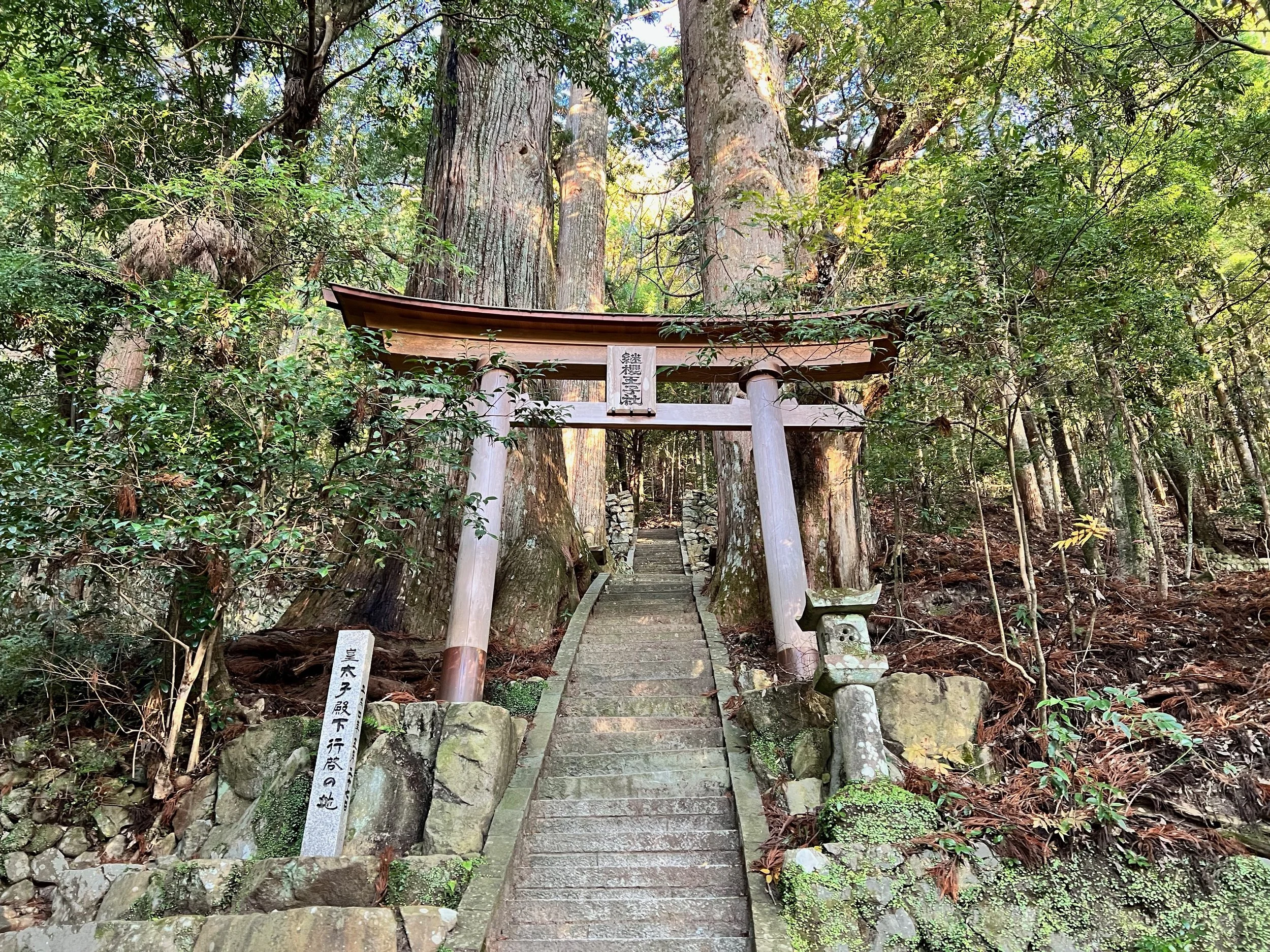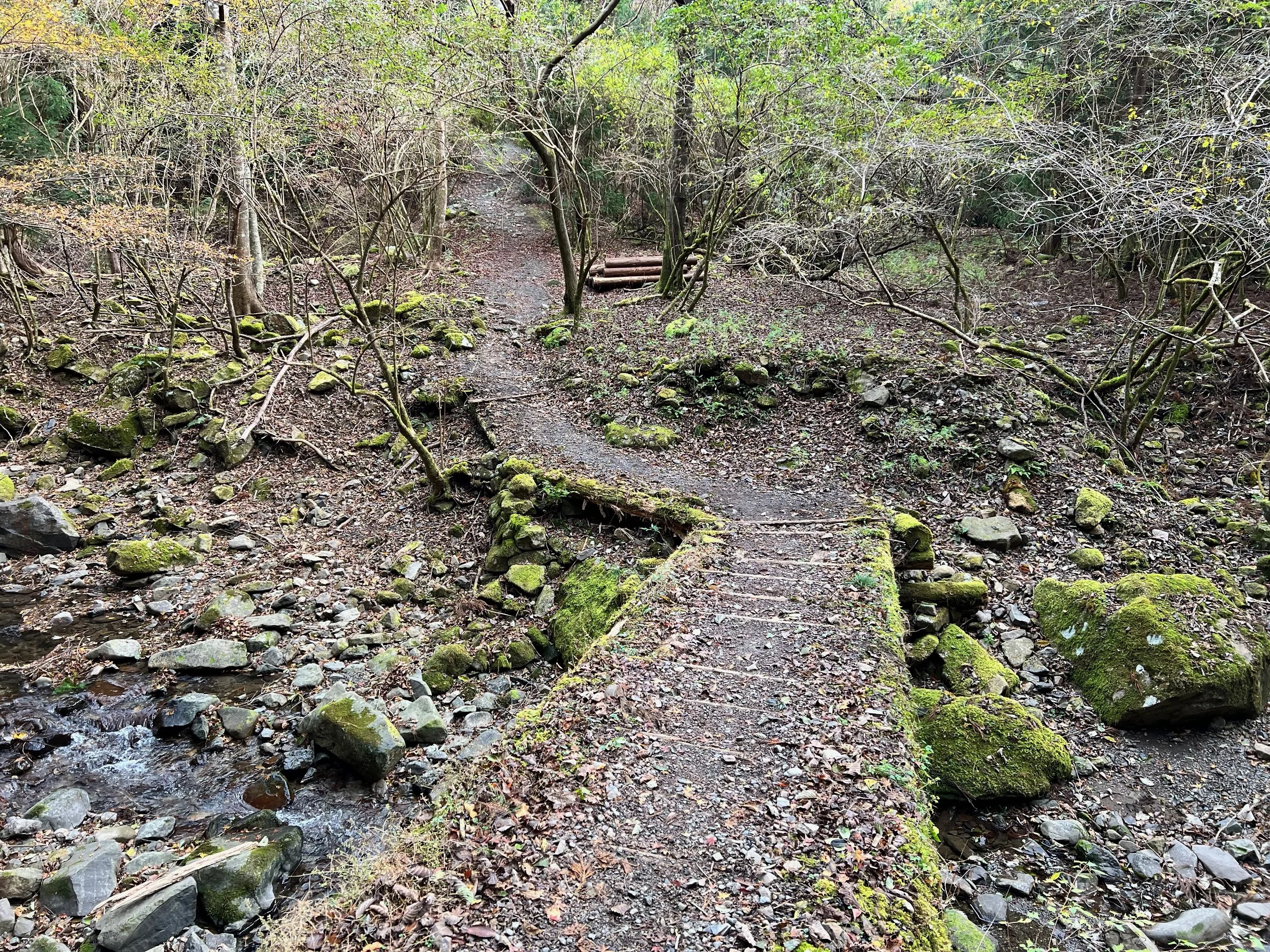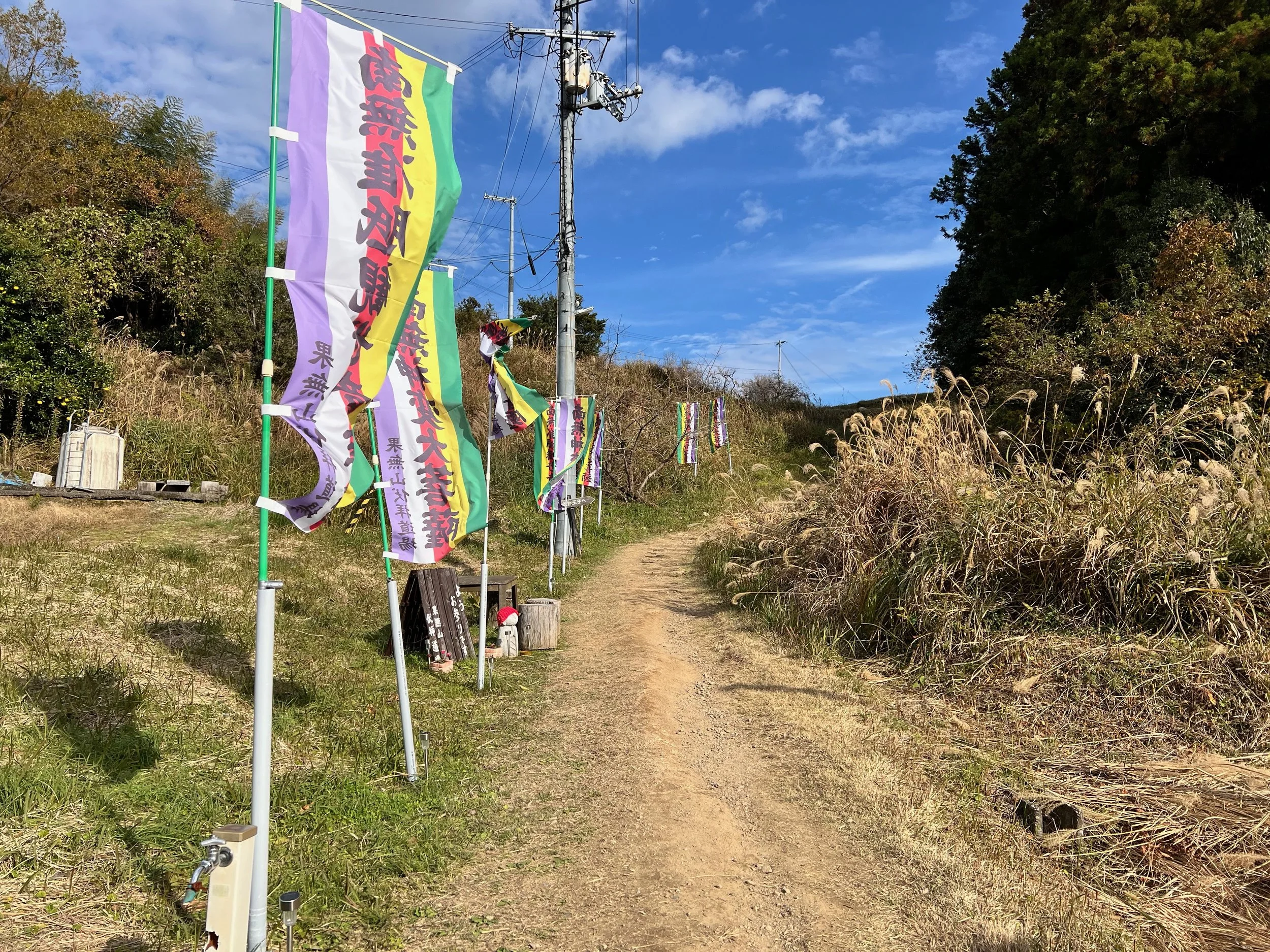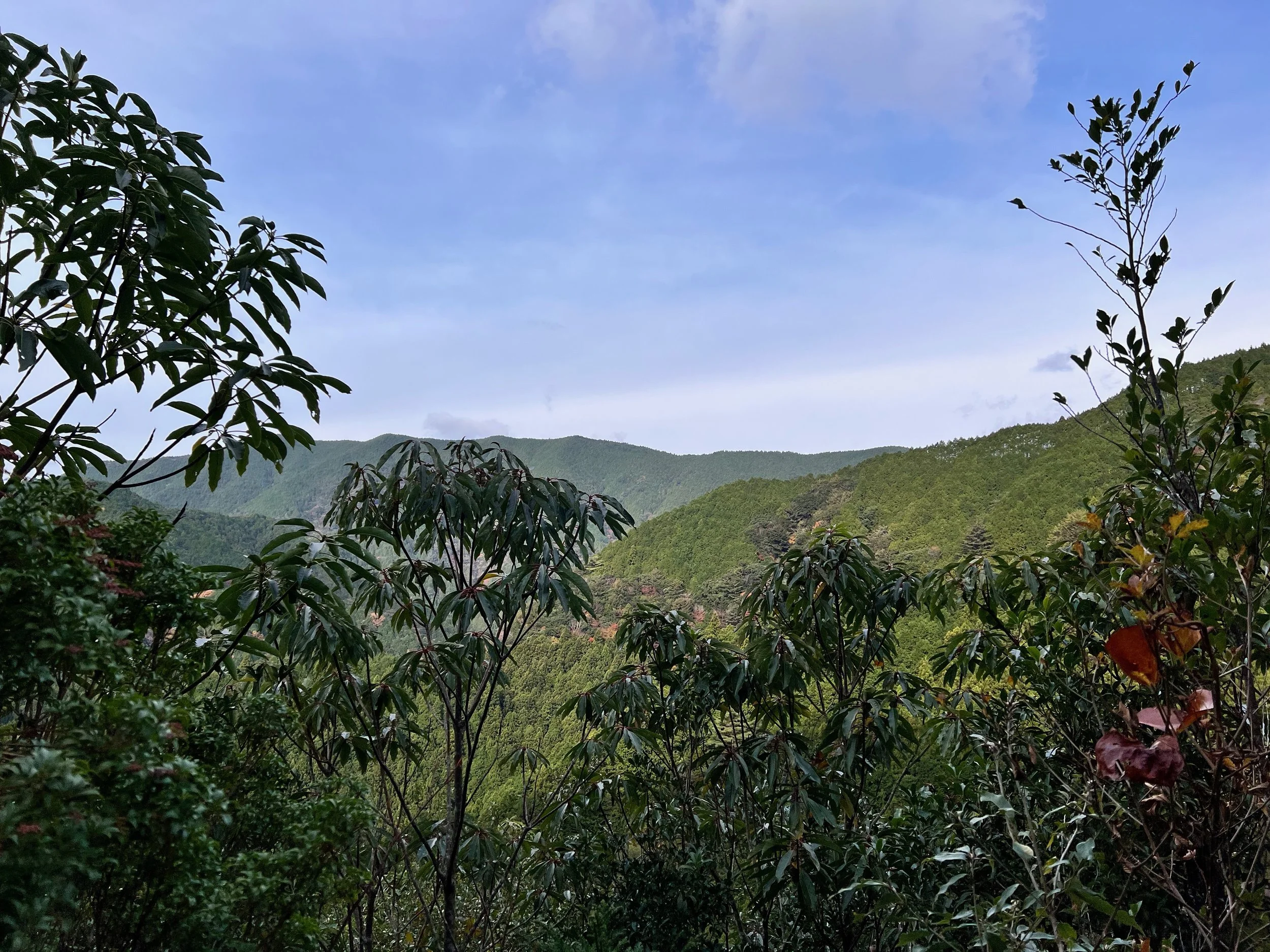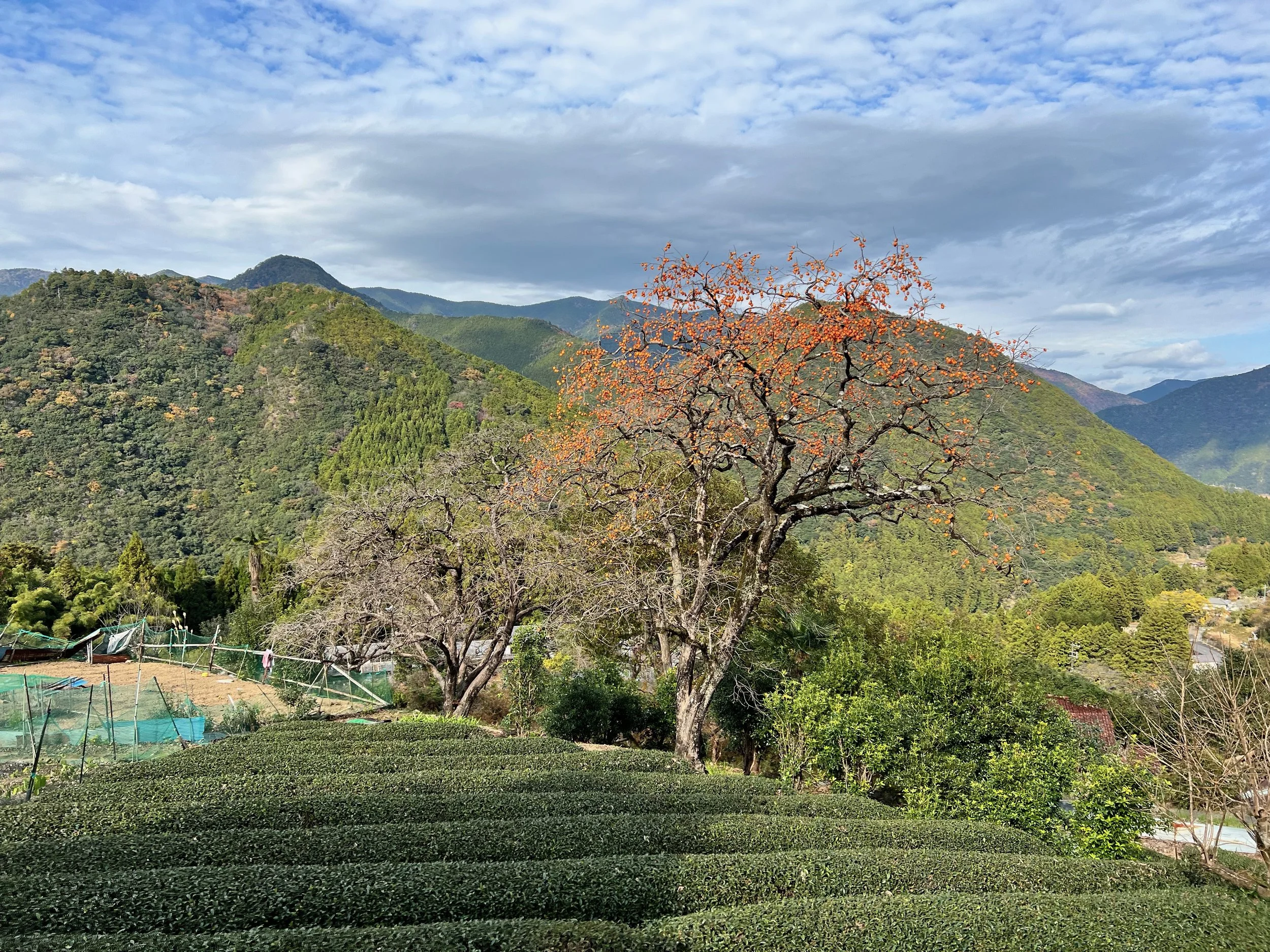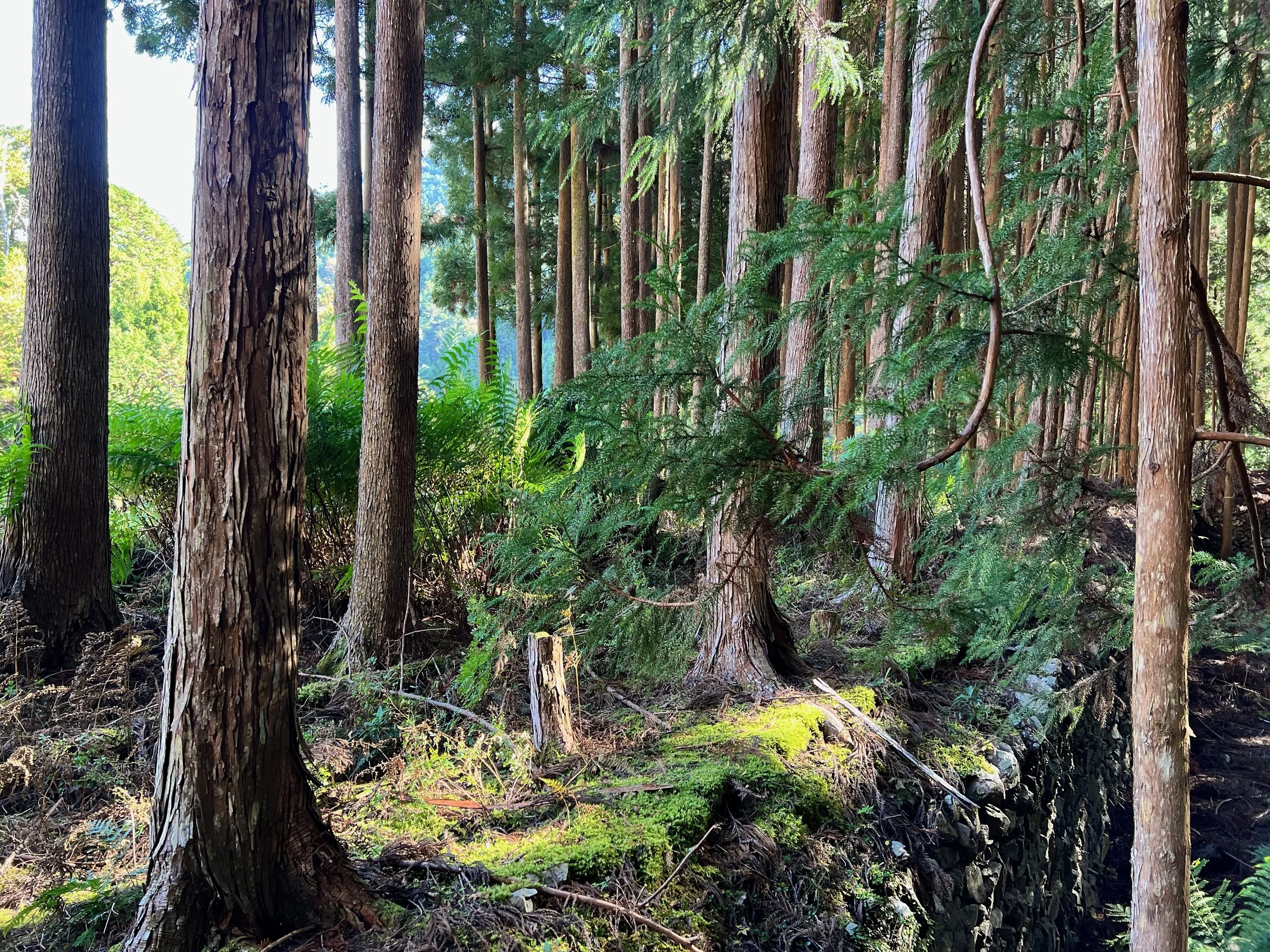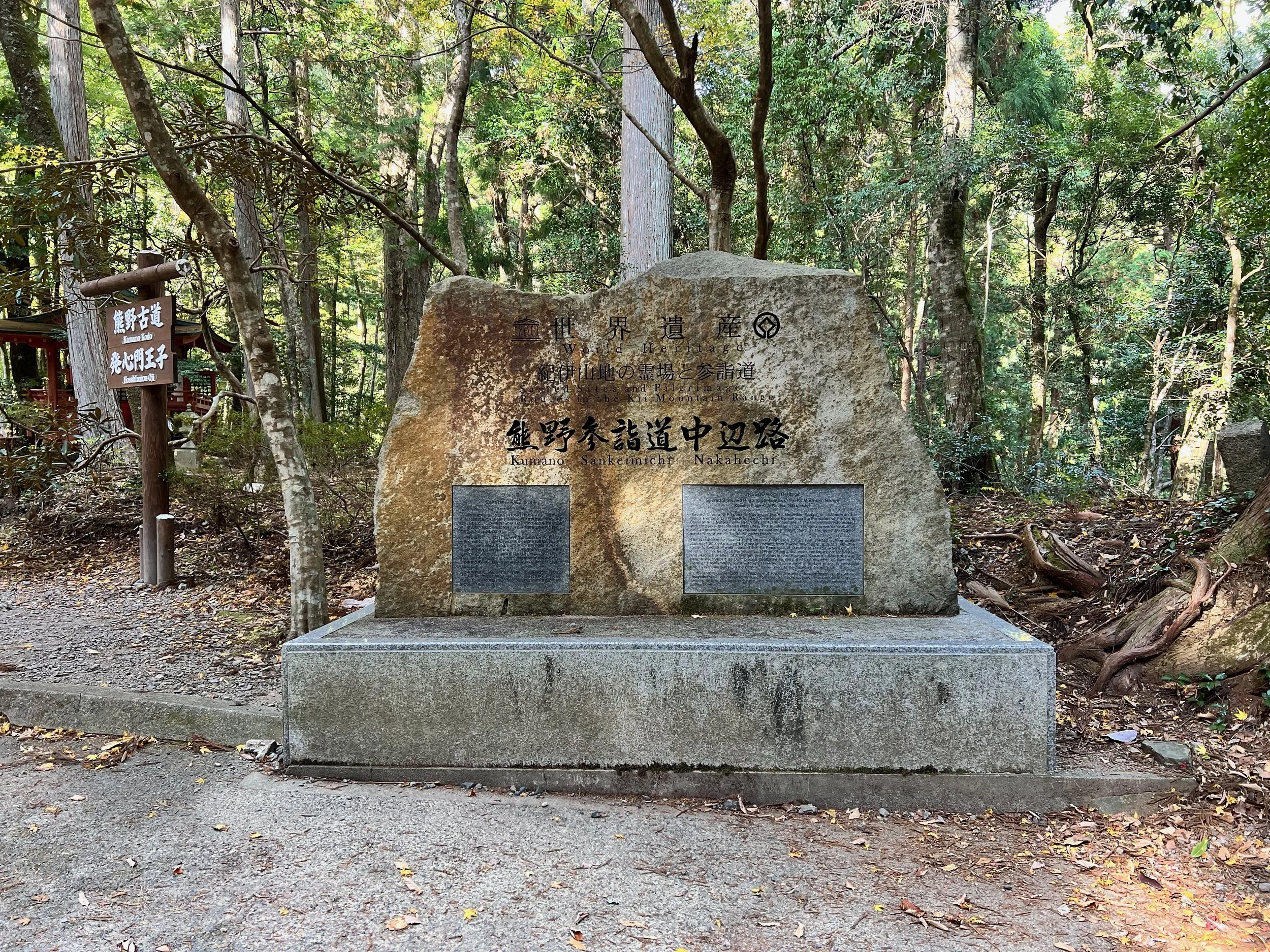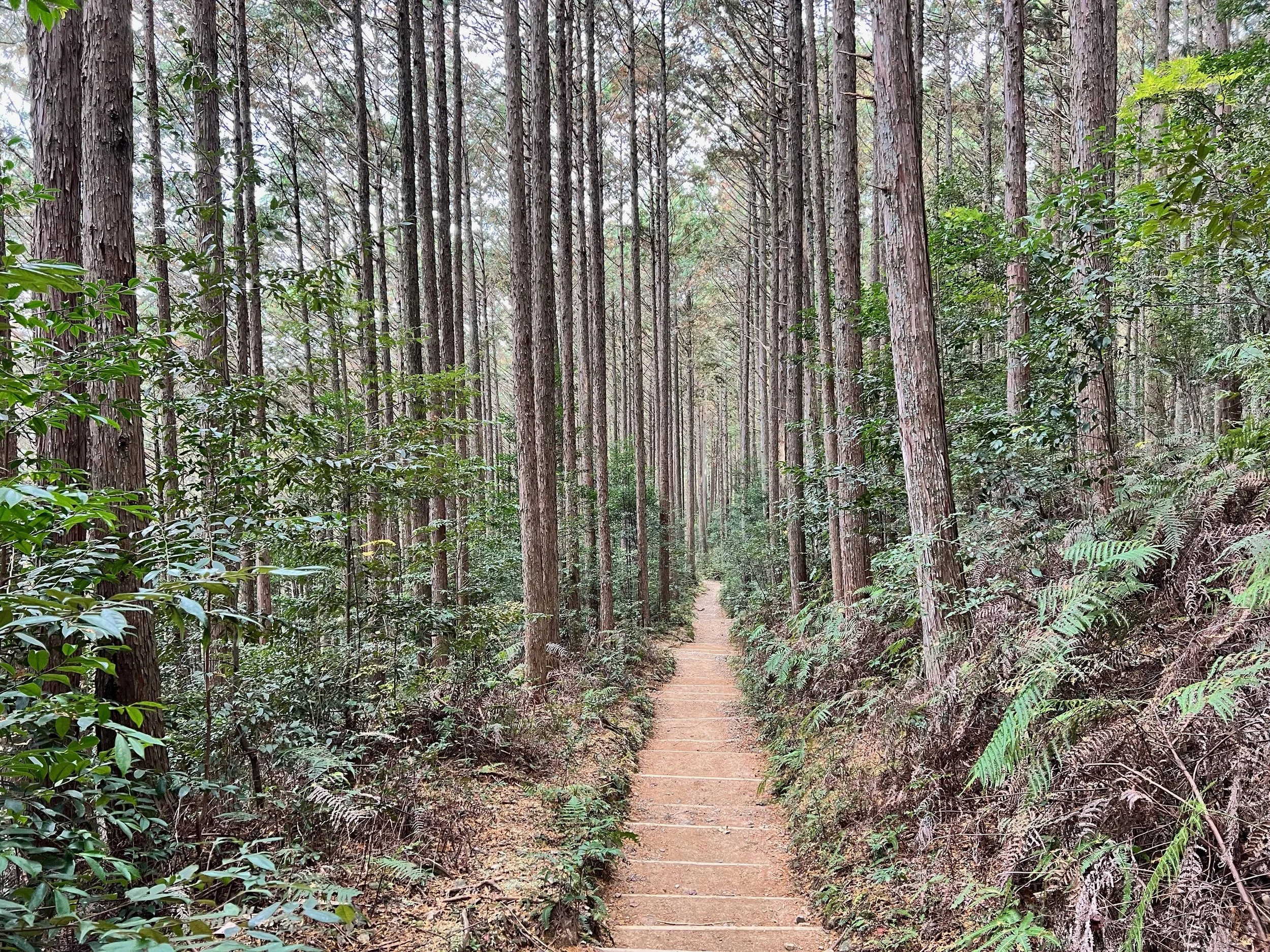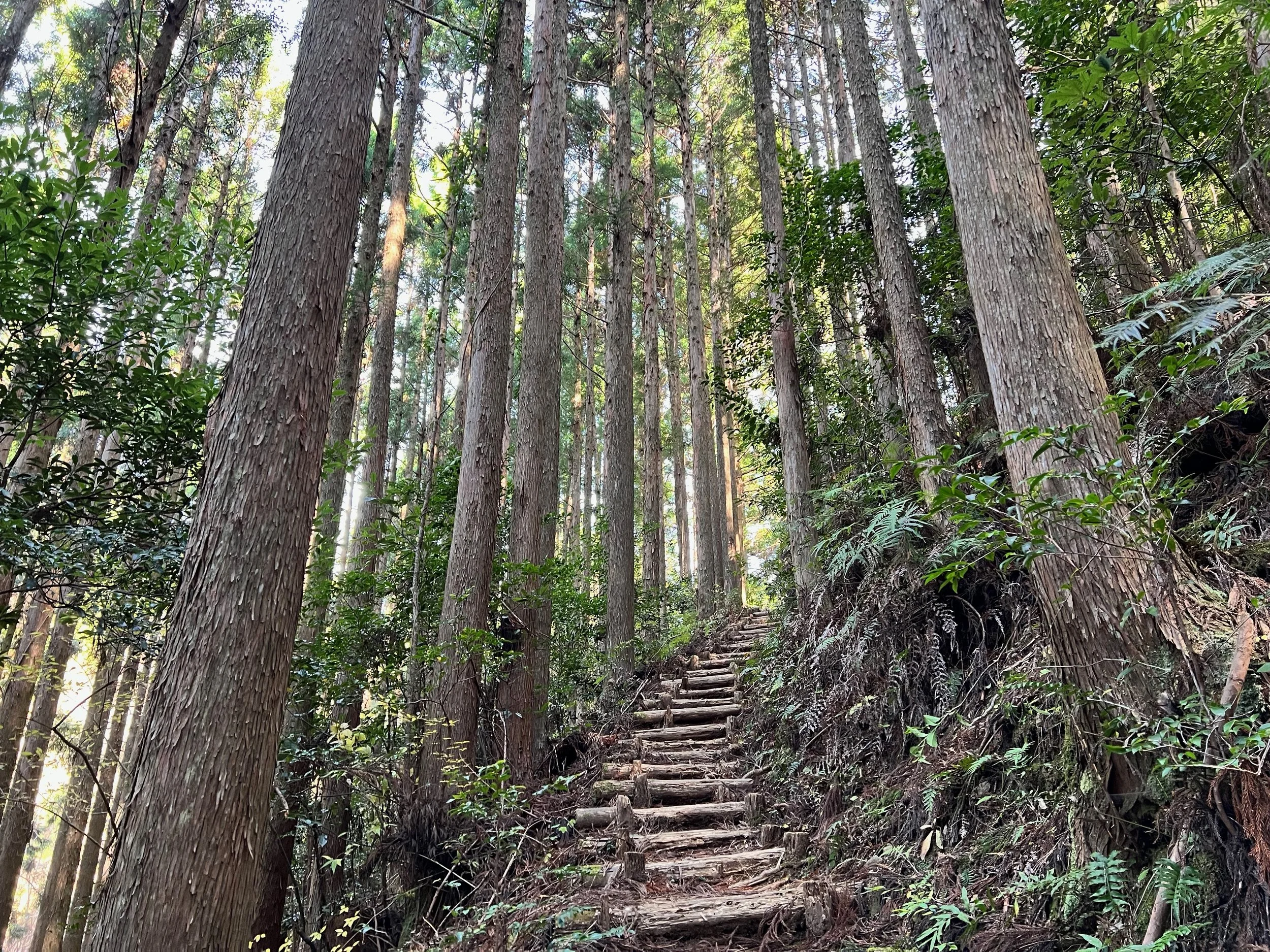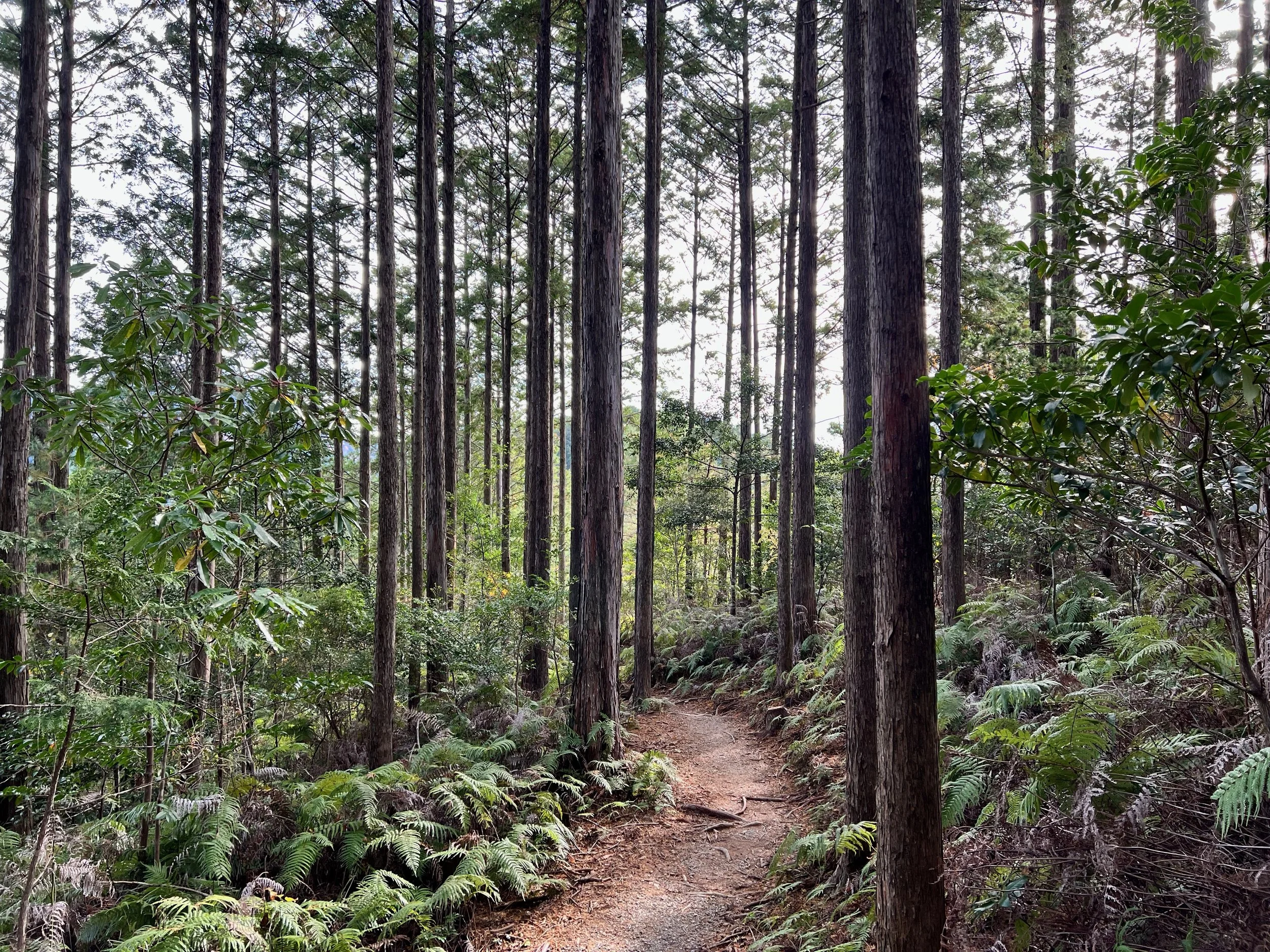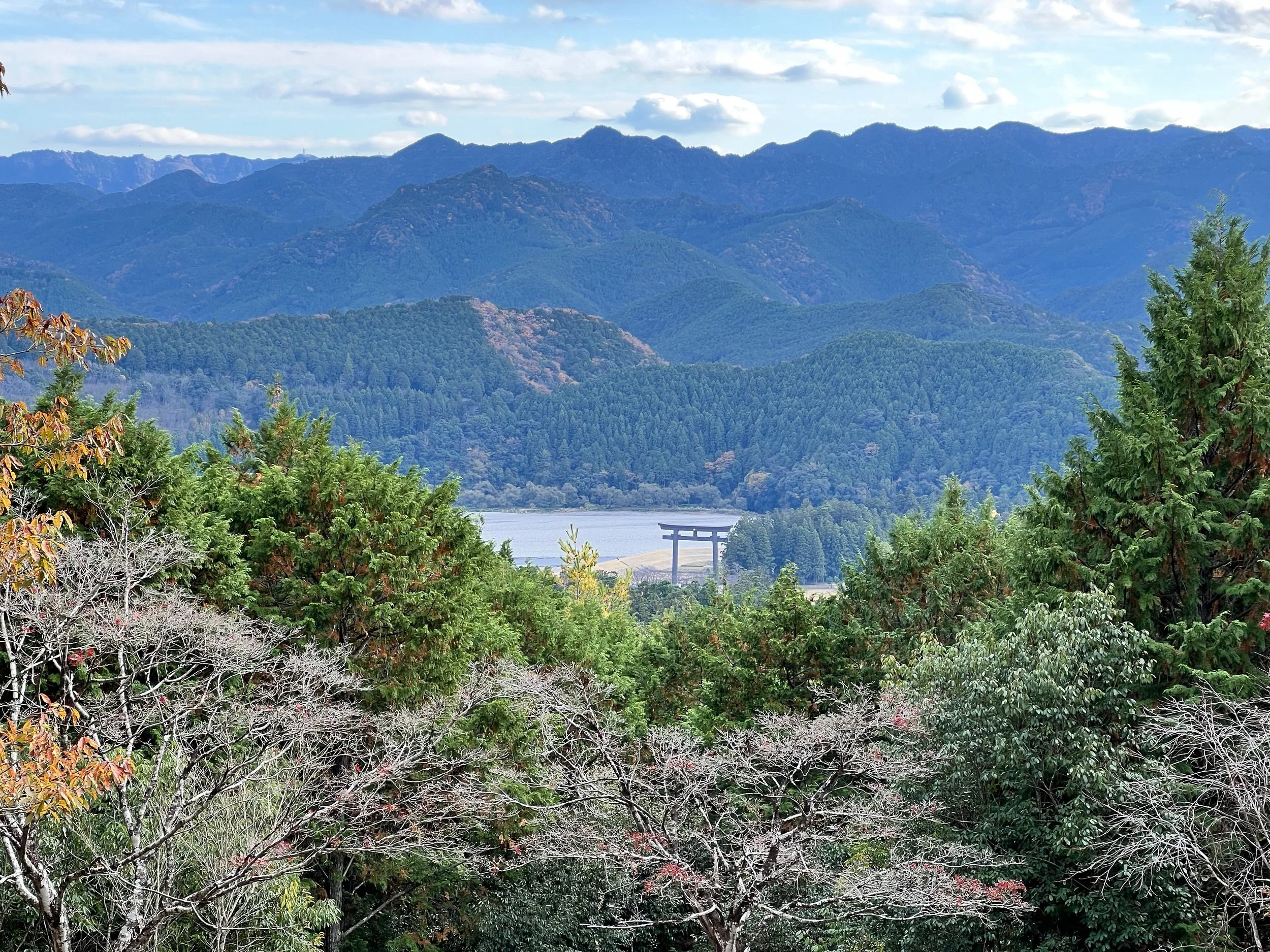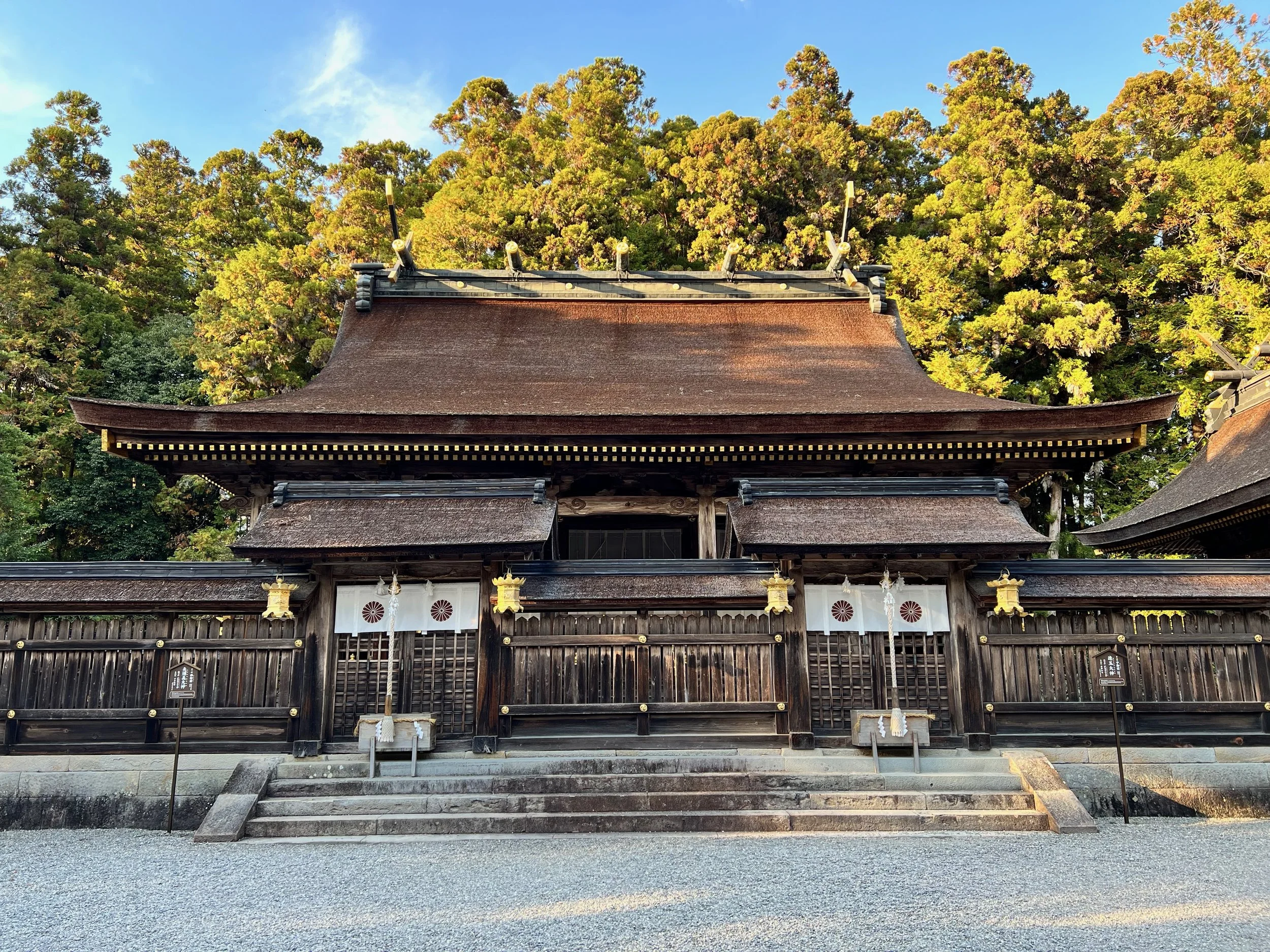Kumano Kodo Nakahechi – Day 2: Nonaka Ipposugi to Hongu Taisha
Today was the longest day of my Kumano Kodo pilgrimage. I caught the first bus from Kii-Tanabe Station to Nonaka Ipposugi and hiked 1.7 km up a winding mountain road to rejoin the trail. This long and sacred section of the Nakahechi Route has been walked by pilgrims for centuries, passing through mountain passes, cedar forests, and small villages on the way to Hongu, the spiritual heart of Kumano. The route was said to have more downhill than uphill, with the steepest part being the detour section. My main goal was to reach Hongu early enough to get my Dual Pilgrim Certificate and catch the last bus to Yunomine Onsen.
The trail started beautifully, with fall-coloured trees lining the path—I took more photos than I care to admit. After some mountain road walking, I reached the detour, which began with a steep climb. I took it one step at a time—it was tough on the legs. After that, I arrived at Mikoshi-toge Pass and took a short break before descending. Signs warned of the steep descent, and I was grateful for my hiking pole.
At Fushiogami-Oji, one of the small Oji shrines historically used by pilgrims for rest and blessings, I stopped for coffee at a small tea house run by local women. Feeling energized, I practically skipped the last stretch to Hongu Taisha, where I got my final stamp required for the Dual Pilgrim Certificate.
I submitted my completed credential and Camino de Santiago certificate at the Kumano Hongu Heritage Centre and received my washi-paper certificate. I also picked up a golden shell, a special gift for the 20th anniversary of the World Heritage Recognition, and even got to drum the taiko near the shrine—it put a huge smile on my face.
Soon after, I caught the bus to Yunomine Onsen. My hostel had three private baths, and soaking in one was the perfect way to relax after a long day.
History & Background
Hongu Taisha (熊野本宮大社) is the spiritual heart of the Kumano Kodo pilgrimage network and one of the three Grand Shrines of Kumano, alongside Hayatama Taisha and Nachi Taisha. Located in a serene valley, the shrine has been a central site of worship for centuries, attracting pilgrims seeking spiritual purification, blessings for safety, and guidance on life’s journey.
Historically, Hongu Taisha served as a key stop along the Nakahechi route, the most traveled of the Kumano Kodo trails. Pilgrims—ranging from ordinary villagers to members of the Imperial family—followed these paths to reach the shrine, performing rituals at small Oji shrines and resting points along the way.
Today, visitors continue to follow much of the same route, experiencing the same cedar forests, mountain passes, and quiet reflection that have defined the pilgrimage for generations. The shrine itself preserves centuries of ritual and architecture, offering pilgrims and hikers alike a tangible connection to Kumano’s rich spiritual heritage.
Getting There
To reach the trailhead at Nonaka Ipposugi, take a bus from Kii-Tanabe Station. Buses run several times a day, and the ride takes approximately 40–45 minutes. The bus drops you along the road that marks the start of the approach to the trail. From there, it’s about 1.7 km uphill along a winding mountain road to reconnect with the main Kumano Kodo trail.
Route Overview
Distance: 24.89 km (Nonaka Ipposugi bus stop → Kumano Hongu Heritage Centre)
Total elevation gain: 986 m
Duration: 6 hr 13 min (with breaks 7 hr 16 min)
Difficulty: Hard
Cost Breakdown
Bus: Kii-Tanabe Station → Nonaka Ipposugi — ¥1,490 (cash)
Bus: Hongu Taisha bus stop → Yunomine Onsen bus stop — ¥310 (cash)
Accommodation: J-Hoppers Kumano Yunomine Guesthouse (booked via Agoda) — C$30.35
Food: ¥3,150
